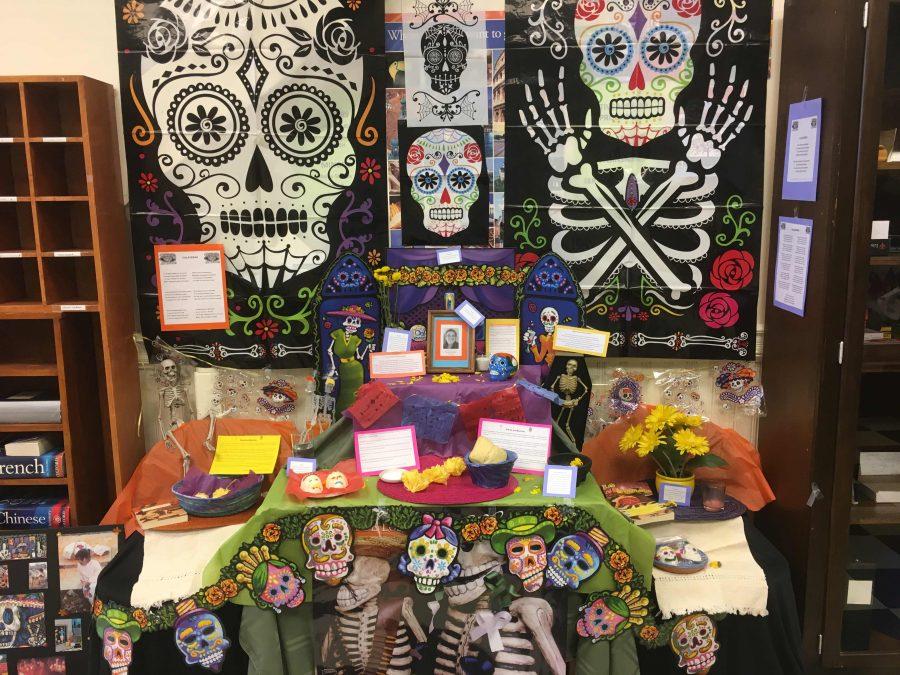Modern Languages celebrates Day of the Dead with Mexican altar
Crier\Emily Craig
The Department of Modern Languages dedicates altar to Colombian novelist, Gabriel García Márquez, author of Cien días de soledad.
November 2, 2016
Each year, members of the Modern Language Department create an altar to celebrate the Day of the Dead.
Although the holiday has its origins in Mexico, it also is celebrated throughout Latin America. On Nov. 1 and 2, families honor deceased family and friends by creating altars of all sizes that showcased certain foods, knick-knacks, and photos as well as hosted parties.
Traditionally, families would honor the deceased children and infants on Nov. 1, the Day of the Innocents or Día de los Inocentes, and deceased adults on Nov. 2, the Day of the Dead or Día de los Muertos.
Both days are meant to celebrate the things their deceased loved ones enjoyed in life. The holiday is meant to encompass the idea that death is a fundamental and cultural part of the experience we have on Earth.
For the members of the Modern Language Department, this altar signifies something a little different. The Crier spoke with the Department’s resident expert in Mexican altars, Professor Claudia Cardenas.
Cardenas told The Crier, “This altar is an opportunity to share traditions and understand the approximation of themes such as death in other countries.”
Last year the Modern Language Department began showcasing their altar for the Day of the Dead in a more formal manner. Doing so allowed them to share cultural traditions of Hispanic Heritage with the students.
As all altars typically have elements of nature, the altar showcased in the Language Resource Center (LRC) on the fourth floor of Alumni Hall incorporates the four essential elements of earth, wind, water, and fire.
A sign on the altar explains, “The Earth is represented by symbols and aromas of the harvest season. Clay bowls filled with corn are displayed. Wind is evoked by the use of papel picados (artfully cut paper) fluttering freely in the breeze… Water is placed in an open container so the souls may quench their thirst after the long journey. And fire is symbolized by the ever-present burning candles that guide the souls home…”
Salt is another element included on the altar, used to purify the spirits that pass through on the Day of the Dead.
The Department decided to keep the altar up in the LRC for the entire week to celebrate the traditional Mexican holiday, as well as to honor Gabriel García Márquez. Márquez was a Colombian novelist who won the Nobel Prize for Literature as the author of 100 Years of Solitude, among other many famous books.
Not only did Cardenas have a hand in designing and contributing to the altar, but various professors provided artifacts to help decorate. These artifacts include various skeletons, posters, Gabriel García Márquez quotes, flowers and candles. A photo is placed at the top-most point of the altar underneath an arch, which represents the passage between life and death. Since the altar this year is dedicated to Márquez, the photo on the altar is one of him.
Several posters surrounding the altar feature Calaveras. These Calaveras are poems specifically written for the Day of the Dead and tend to criticize the living in a witty manner. The Modern Language Department kept the altar in the LRC all week to celebrate the Day of the Dead, but will take the altar down within the week of Nov. 7.



